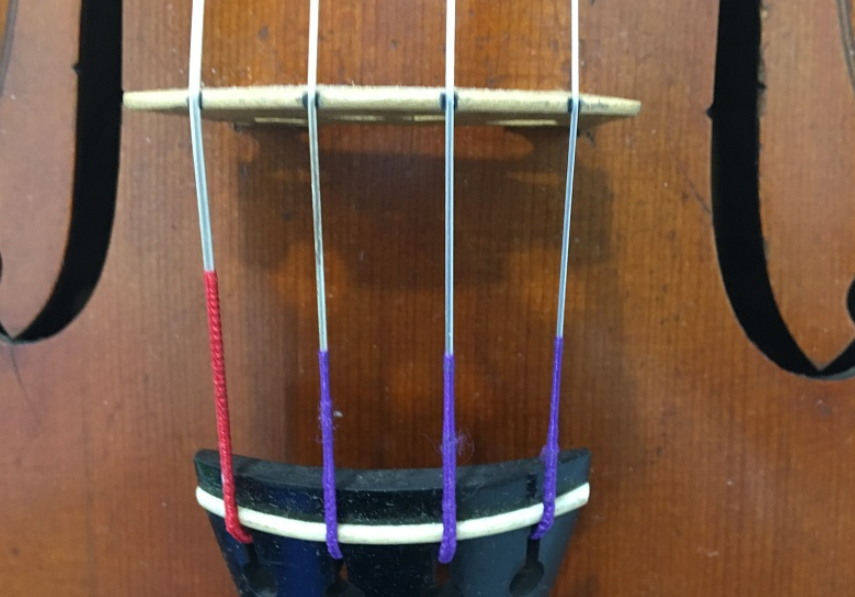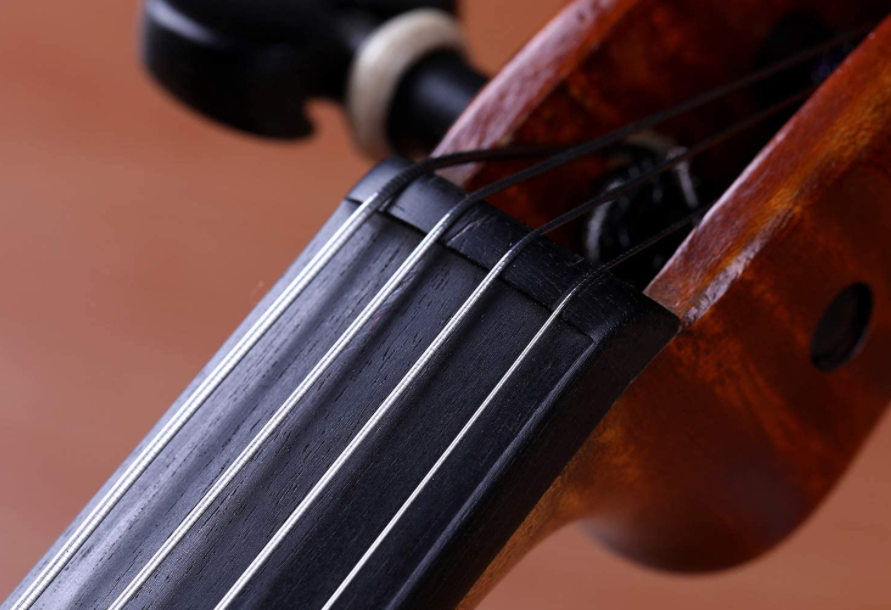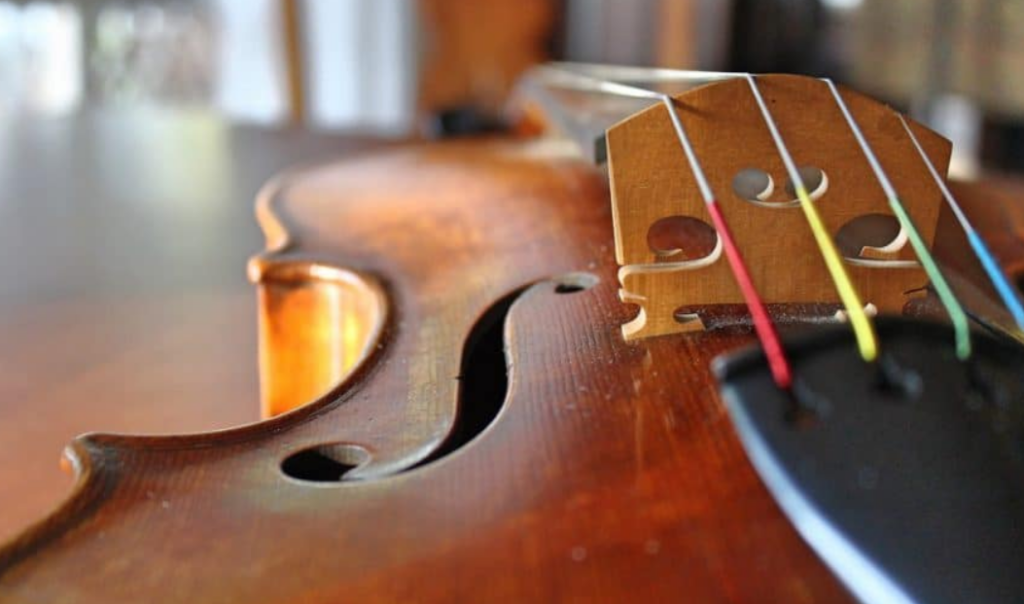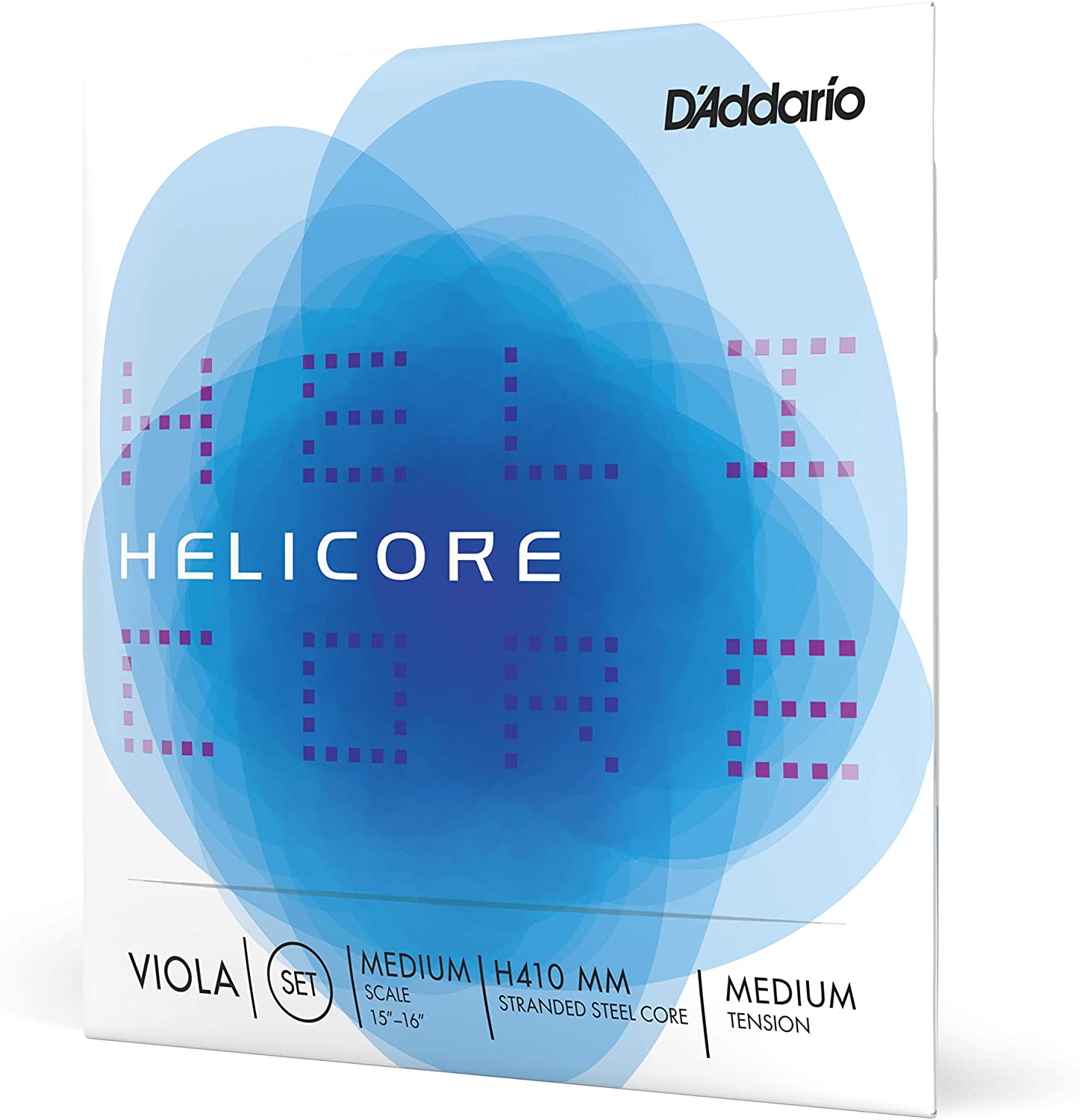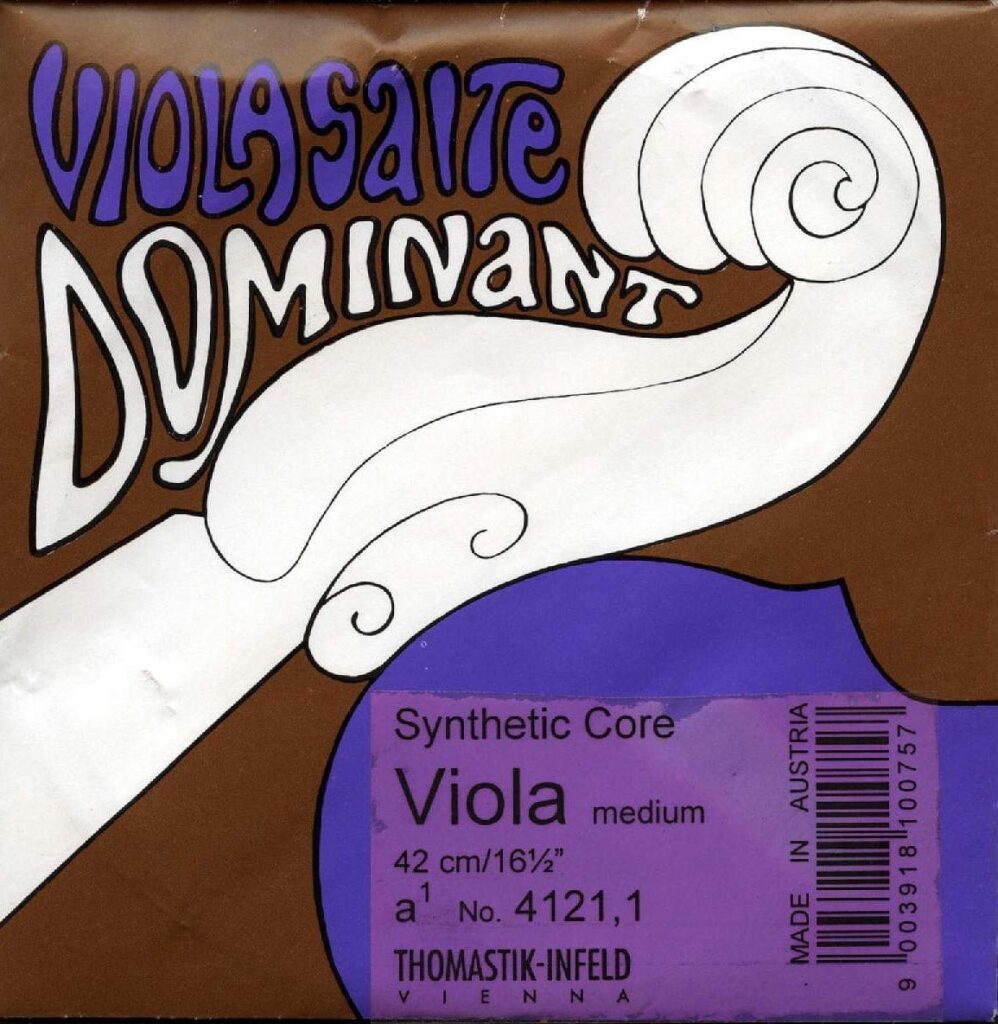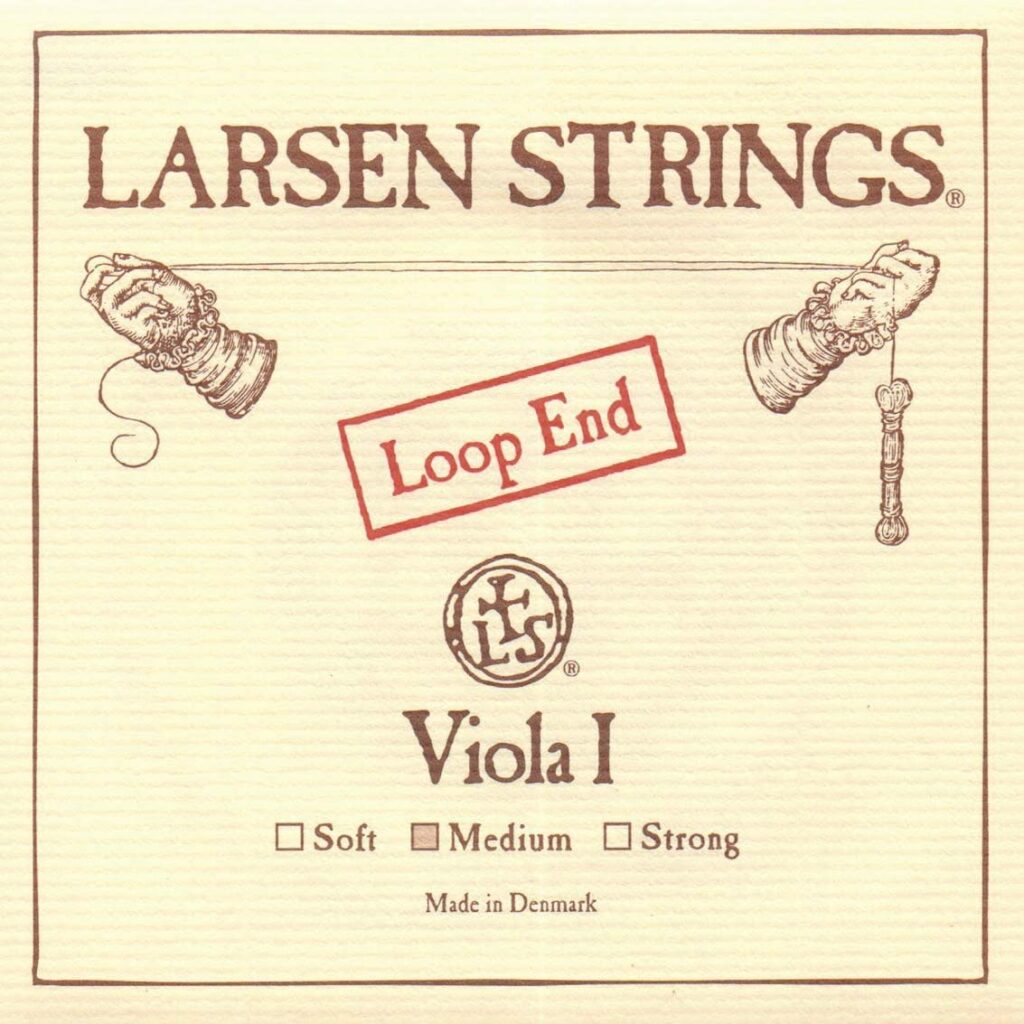- How to Find the Best 5 String Violins - April 19, 2022
- Top Violin Accessories to Consider - April 18, 2022
- Best Left-Handed Violins Guide - April 13, 2022
Summary: Knowing how to find the best viola strings means picking strings that fit your instrument and align with your musical skills.
Many people spend a lot of time finding the best viola, but what about the strings? The strings can impact the sound produced by your instrument and how effectively you can show off your skills almost as much as the design of your instrument.
Unique Needs of Violists
A viola needs strings that fit perfectly. If the strings are meant for another instrument or don’t line up, you won’t get the beautiful higher tones. But more than that, a viola needs strings that match your musical skills.
| Beginners | Beginners need strings that are very responsive, maintain their pitch, and don’t need a lot of maintenance. |
| Intermediates | Intermediate musicians need strings that refine their technique and sound. |
| Advanced | Advanced performers need strings that offer complex overtones and distinct clarity changes to control quality, projection, and sound during performances. |
Are Viola and Violin Strings the Same?
Even though the manufacturers and the materials used for violin strings and the best Viola strings might be the same, they are tuned differently.
- Violin strings get tuned with E at the top and G at the bottom of the range. This makes the strings one-fourth down from each other.
- Viola strings get tuned with A at the top and C at the bottom of the range. This makes the strings one-fifth down from each other.
| Violin strings | E, A, D, G |
| Viola strings | A, D, G, C |
What are the Best Viola String Types?
For violas, there are three types of strings, but the best will be based on what you need most:
- Gut
- Synthetic
- Steel core
The different materials for each impact your viola strings’ sound and playability.
Gut Strings
Gut strings are made from the gut. Just like your gut, they absorb moisture in the air, so if you are playing in a human environment or sitting under stage lights, the streams are more likely to fall out of tune more often. I only suggest gut strings for professionals. They give better clarity and richer and more complex overtones, but they only do that if you have the technique to bring out that characteristic, which beginners don’t have.
Steel Strings
Steel strings have a steel core and usually have some metallic wrapping. They give a slightly metallic sound, making them ideal for intermediate or professional musicians who play Blues, Jazz, Rock, bluegrass, or metal. I don’t recommend them for beginners because they are harder to play physically, and they don’t have the same responsiveness. Beginners need to focus on developing the correct technique and holding their instrument correctly, so there’s no need to add strings to your viola that make it more challenging to do that. However, even as a beginner, if you have an electric viola, steel strings are the best fit for you.
Synthetic Strings
Synthetic strings are great for all levels of skill, but especially beginners. I recommend that beginners stick with synthetic strings until they decide what type of music they want to play primarily. Even as an intermediate musician, I still used synthetic strings for many years.
Synthetic strings maintain their pitch and stability, so you don’t have to fumble trying to get your viola in tune regularly as a beginner. This can be incredibly useful for traveling or performing on stage underneath hot stage lights, even as a professional.
You can find the best viola strings made with synthetic materials explicitly designed for all musical skill levels starting with beginners through professionals. No matter the musical skills, these strings will last longer and have better responsiveness as you play.
| String Type | Gut Strings | Synthetic | Steel |
| Who are the best for | Advanced players | Beginners | Intermediate |
| Which genre are they best for | Classical, chamber music because of the complex overtones | Any type of music thanks to the stable pitch. Still, there isn’t variety in the sound | Jazz music, metal, and country thanks to the metallic tones and better control over timber. |
If you want to restring your viola, this video from a top string manufacturer demonstrates the right way to do it:
The Best Viola String Wrappings
When you find the best viola strings, you might see words like “winding” or “wrapping” on the package or the description. This literally refers to the material used to wind or wrap around the core.
As a beginner, this will not matter at all. It’s not worth investing in more expensive wrappings or windings because it won’t change the sound you produce. No string material can compensate for a lack of skill or simple technique.
However, as you progress and get better, you might notice a difference in the sound quality produced when you play with different windings or wrappings.
The most common windings or wrappings on the best viola strings include:
- Gold
- Silver
- Aluminum
- Copper
You often get the first three for steel strings, but you get copper, gold, and silver for gut strings. In any case, the wrappings influence the vibrations generated by your bow movements and the friction between your bow and the strings.
Each wrapping is suitable for different musical genres. For example:
- If you are an advanced or professional musician playing with a chamber orchestra or an ensemble that focuses on classical music, gold wrappings are conducive to the warmest, richest sound perfect for this type of music.
- If you are an intermediate or professional musician playing things like Bluegrass, Jazz, country, or folk music, aluminum or silver wrappings will generate the metallic sounds associated with these musical genres.
Gauge on the Best Viola Strings
When you evaluate a different viola string set, you will see a lot of different statistics on the package, one of which is the gauge. The gauge refers to the thickness of the string.
One is not necessarily better than the other. Thicker strings require a higher level of tension to stay in tune. Higher tension strings don’t respond as quickly to your bow movements, so you have to work physically a little bit harder to produce the same sound. The upside is that thicker strings also give you more volume, so if you are part of an ensemble or an orchestra, more significant strings might be the better solution for you.
Similarly, thinner strings do not produce the same volume, which might be just fine for a beginner. They respond better to bow movements with heightened clarity, so soloists who don’t need as much volume to be heard over the sounds of competing instruments or beginners who simply need something that responds better would do well to invest in thinner gauges.
| Gauge | Who Should Use It |
| Thick Strings | Members of an ensemble, intermediate or advanced |
| Thin Strings | Soloists or beginners who need strings that are easier to work with |
Having said all that, I stick with a medium gauge. I have tried both thinner and thicker strings, and while they are suitable for different performance venues, I stick with a medium gauge when I am just practicing or playing at home.
The Best Viola Strings
There are a handful of great manufacturers for the best viola strings, including:
- D’Addario
- Pirastro
- Thomastik
- Larsen
This video gives you a quick peek at the sounds from one of these manufacturers:
D’Addario
When you are starting and want to buy an entire set of strings rather than one string at a time, D’Addario Helicore Viola Strings are highly recommended. They have a very flexible design with many different sizes and gauges. What I like most is that you can purchase individual strings or entire sets. So, if I break just one string at a time, I don’t have to buy a whole set of spare strings to get a suitable replacement. I also like that they divide their strings based on your performance type to purchase strings meant for soloists, or you can buy strings meant for ensemble performers.
Pros
- Versatile strings
- Responsive steel core
- Faster response times compared to other steel strings
Cons
- Smaller string diameter
Pirastro
Once I reached a certain level of musical skill, I switched it to Pirastro for a few years. I like the sound they produce, but I primarily use the strings when performing with an orchestra, making classical music because of the warmer tones. Pirastro Evah Pirazzi Gold Viola String Set is great for advanced musicians who don’t want gut strings but want the same warm tones you don’t usually get with steel strings.
Pros
- Synthetic multi-filament fiber core with chrome windings
- Warmer sounds
- Dynamic range
- Rich overtones for professionals
Cons
- Steel core which not everyone likes
Thomastik-Infeld – Dominant
Thomastik-Infeld – Dominant is among the most popular manufacturers of synthetic strings. And they should be because they were the creator. I loved their sets and had many of them as beginners and intermediate musicians. They have multiple sizes, so you can find one that fits your viola precisely, and instead of the regular nylon, they are made from perlon. I don’t use any other company for synthetic strings.
Pros
- Synthetic core
- Maintains pitch stability which is great for beginners
- Good sound quality
- Available in lots of gauges and lengths so you can find something for differently sized violas
Cons
- Not other core types
- Limited overtones
Larsen
Intermediate players should consider the Larsen line of viola strings. Larsen is a well-known company for violin, cello, and Viola strings. They have many different options, based on your skill level and the material you want. I like that they are designed more for intermediate or professional players rather than beginners.
Pros
- Clear tones
- Warm, rich overtones
- Long lifespan
Cons
- Meant for advanced players
- Sold individually, not as a set, so you have to buy each string on your viola
FAQ
Answer: When you buy the best viola strings, make sure they match your instrument. To do this, measure the back of your instrument, but not the scroll, end button, or neck. While other stringed instruments like cellos and violin come in standard sizes, violas do not. So you have to measure the physical size of your instrument and then ensure the corresponding strings fit that length.
Answer: Yes, you can use violin strings for your viola in some cases. This depends on the size of the instrument you have. If you have a 1/2 size viola, these are usually the same string length as a full size or 4/4 violin, around 32.5 cm. If you have a 1/4 size viola, these are usually the same string length as a 3/4 size violin. You have to make sure that the strings match the length of your viola and that you have the right tension. The tension will naturally be different between the best viola strings and violin strings, but you can adjust this after installing violin strings. I wouldn’t recommend this for beginners, though; I suggest you buy viola-specific strings.
Answer: When you find the best viola strings, you want them to last long. However, how often you have to change your strings depends entirely on how often you play or practice. It is recommended that you change your strings every five months if you play regularly. However, if you are a beginner and only play once or twice per week, you can probably use the same strings for at least one year. If you have a used instrument or are renting an instrument, you might consider changing the strings at the beginning of your rental or purchase because you have no way of knowing when they were last modified.
Bottomline
The bottom line is knowing how to find the best viola strings comes down to knowing your musical skill. If you are a beginner or just comfortable with strings, you don’t have to tune regularly; stick with dominant synthetic strings. If you are an advanced musician or an intermediate musician and specifically play musical genres that require more metallic sound, stick with steel strings. Only as a professional musician playing chamber music or classical music with an orchestra should you invest in the more expensive gut strings.
Looking for more interesting readings? Check out:


